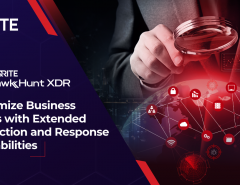When the discussion veers around topics like data security and breach, what are the kinds of organizations which, you think, are most likely at risk? The first answer that comes to your minds might be banks or big multinational corporations. But have you ever thought for a moment about educational institutions?
If you haven’t, then consider the sheer scale of the kind of information a school, college or any other educational institution receives and stores. We’re talking names, addresses, personal credentials, financial details, photos, medical information for potentially thousands of students and teachers. That is a massive amount of Personally Identifiable Information (PII).
Ultra-sensitive data
Then, consider the nature of the data stored in these organizations. The majority of them are young students, some possibly even underage. This is extremely precarious data which can be dangerous and can ruin lives & families in the wrong hands. This is also exactly the kind of information that an attacker would want to replicate cyber identities for other types of crime.
For these reasons, it is crucial that educational institutes employ dedicated, robust cybersecurity solutions to ensure that the data stored is kept away from the wrong hands. There is no “one-size-fits-all” approach – organizations should look into firewalls, VPNs and secure communication controls but one solution they must seriously consider is encryption.
The role of encryption
Encryption is a process by which data is transformed into another form or code, in such a way that only people with a decryption key can understand it. The encrypted data is called ciphertext and unencrypted or decrypted data is called plaintext. An encryption algorithm is run on the plaintext along with an encryption key. The output of this algorithm is ciphertext, which looks like a garbage string of characters that have no intelligible information. This ciphertext is passed onto the destination location over usual channels and the original encryption key is passed separately. This decryption algorithm is run on ciphertext using the same encryption key to retrieve the original plaintext. It is virtually impossible for anyone, who steals this data, to understand it without decryption. The strength of the encryption depends upon the strength of the algorithm and the length of the encryption key.
Through the use of encryption solutions, educational institutes can have the benefit of:
- Securing storage of data – including sensitive data such as student information, research data, financial and health information and more.
- Complying with regulations and standards – By virtue of the sensitivity of the data they possess, educational institutes have to comply with various policies, laws and standards which encryption helps to comply with.
- Securely share data with partners, agencies and the government – Encryption allows secure sharing of important information for an institute with partners or other schools.
Institutes can consider Seqrite Encryption Manager which protects corporate data that resides on endpoints with strong encryption algorithms such as AES, RC6, SERPENT and TWOFISH. Supported on all laptops and desktops running Microsoft Windows, data loss is prevented to occur from loss/theft of endpoint. It provides a powerful solution to issues like unauthorized access or protecting private data by maximizing data protection options. Two of the most important advantages of endpoint encryption include exceptional policy administration and key management followed by highly functional remote device management.
Some of the key benefits of SEM that make it a good option for educational institutes are:
- Centralized management and control
- Full disk encryption with assured data protection and compliance
- Encryption of removal media devices providing security across multiple removal media devices
- Ease of deployment and rescue methods
As an IT security partner for your business, Seqrite provides comprehensive security from advanced cyber threats. To know more




